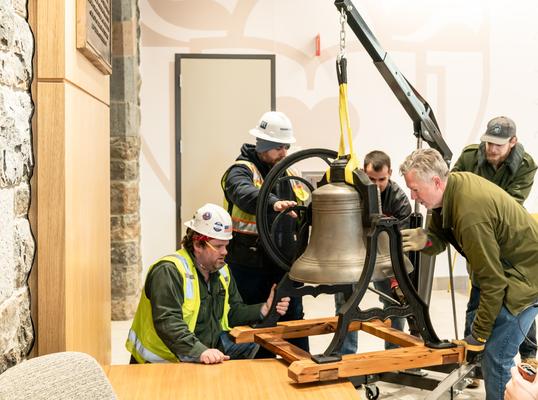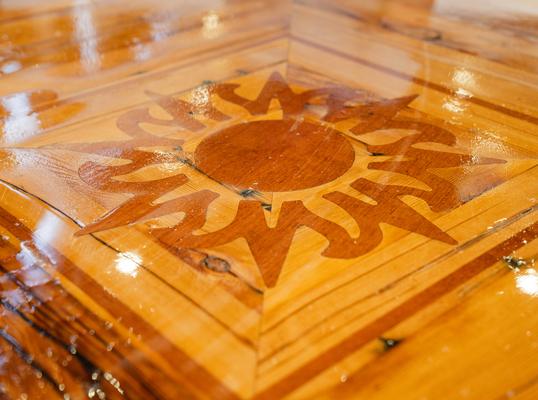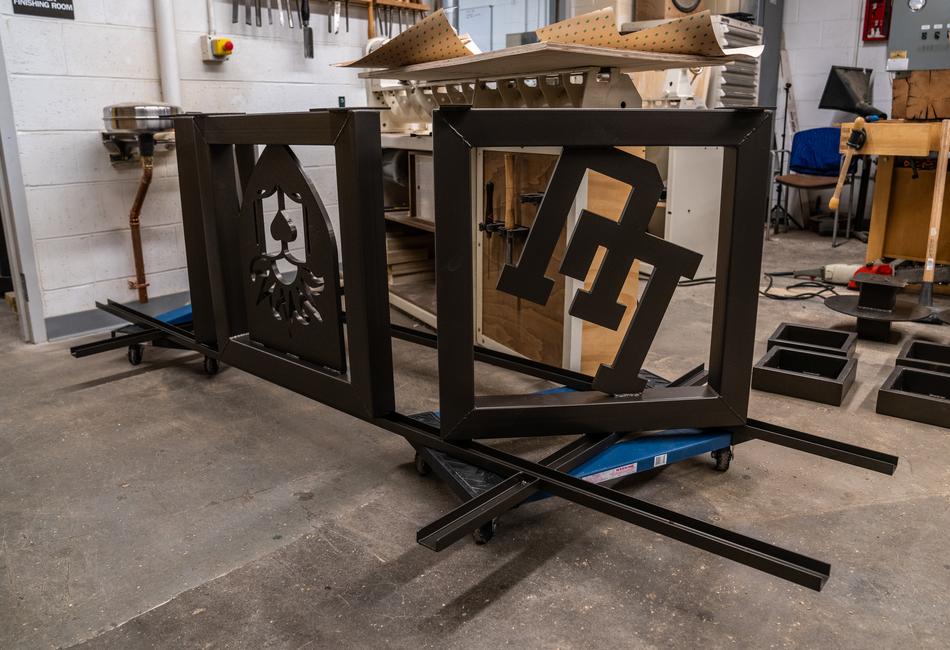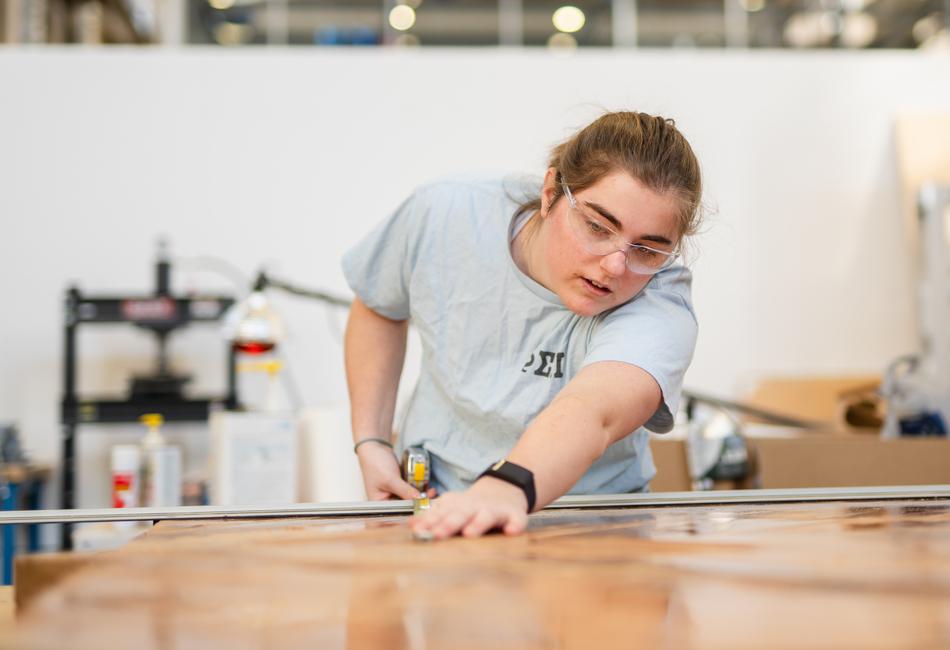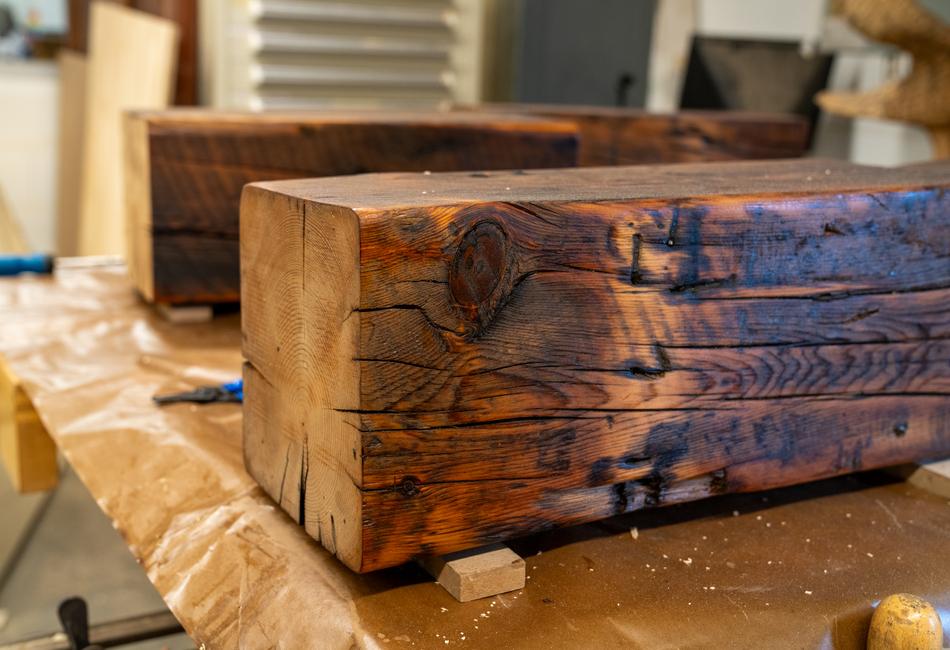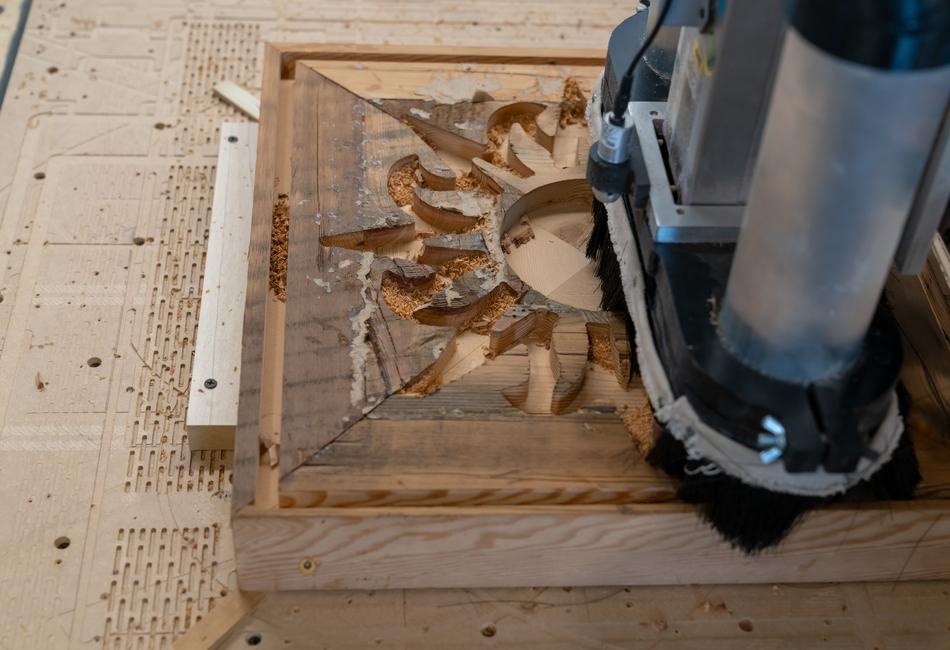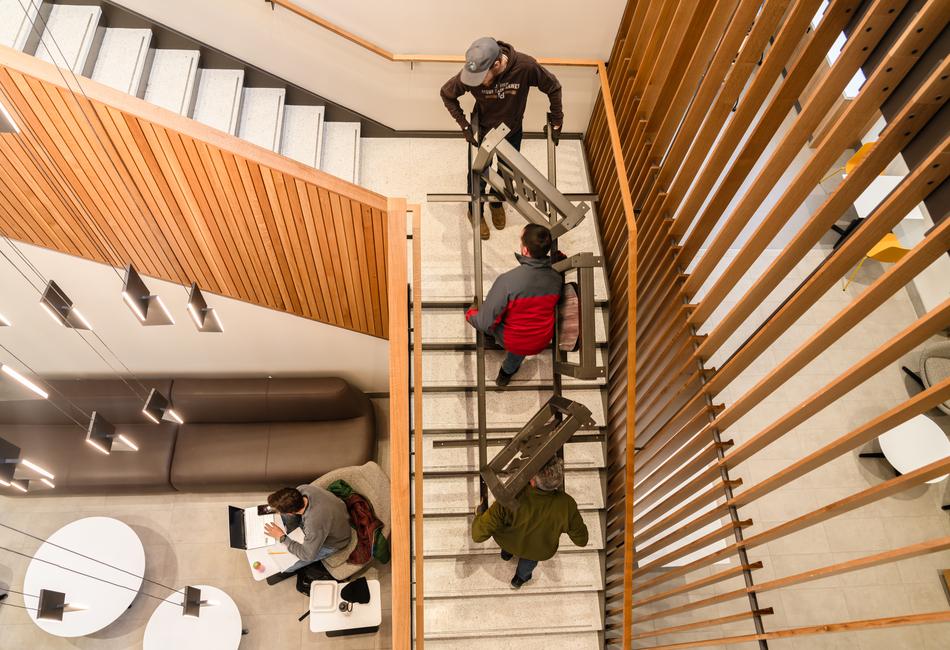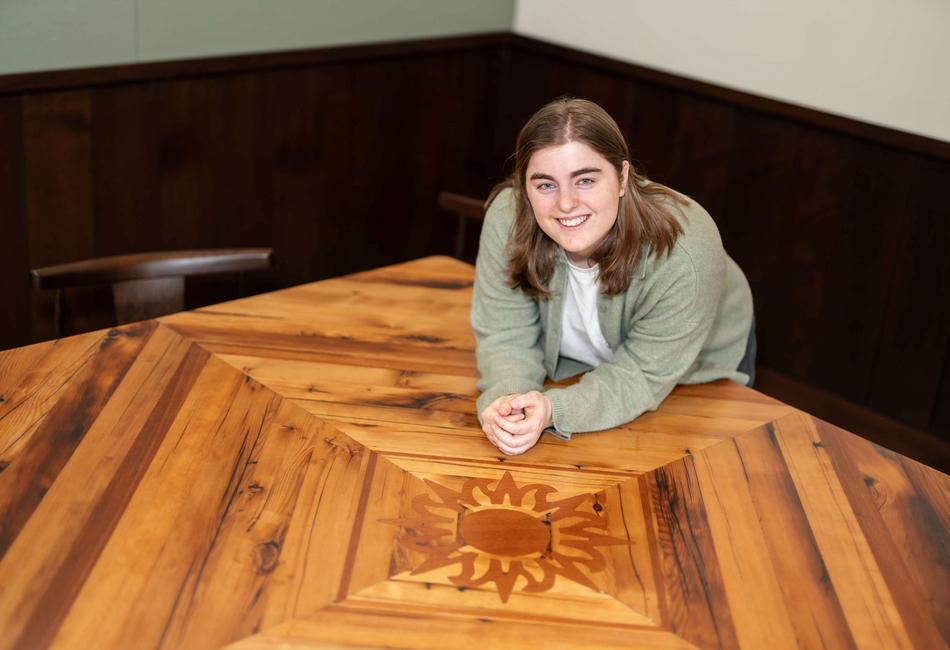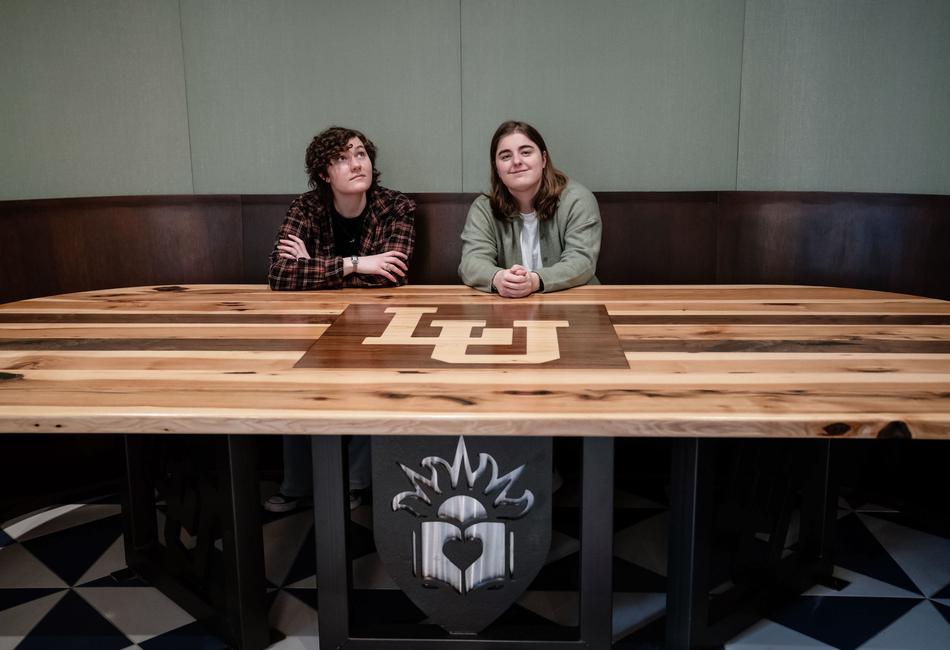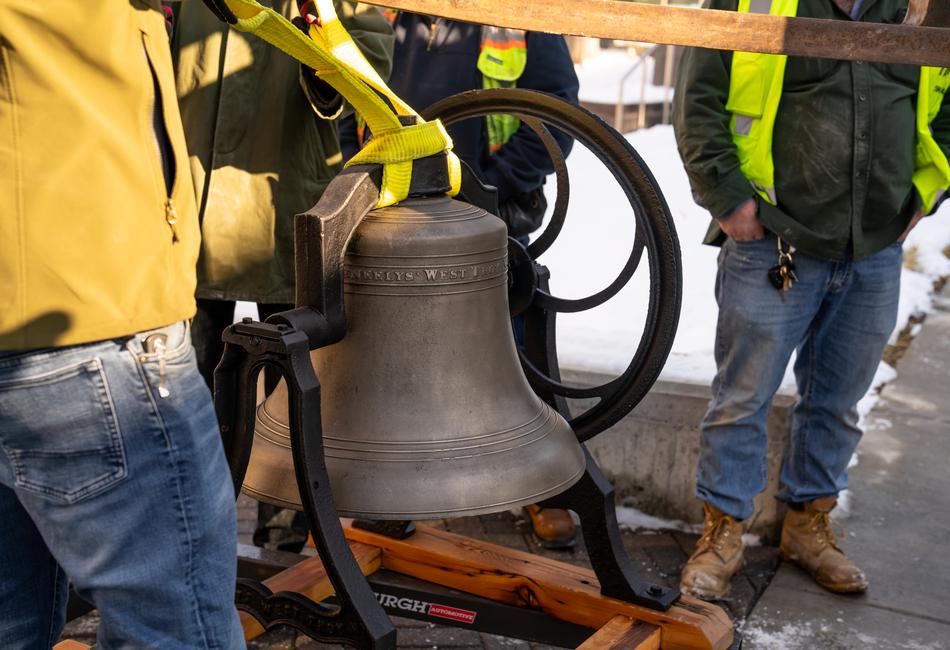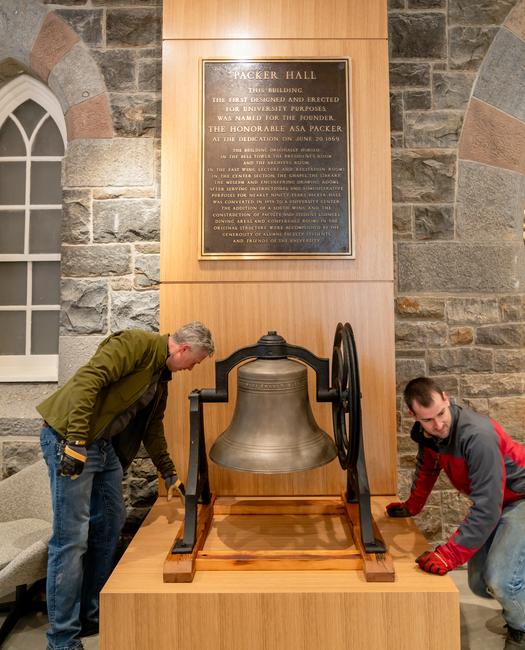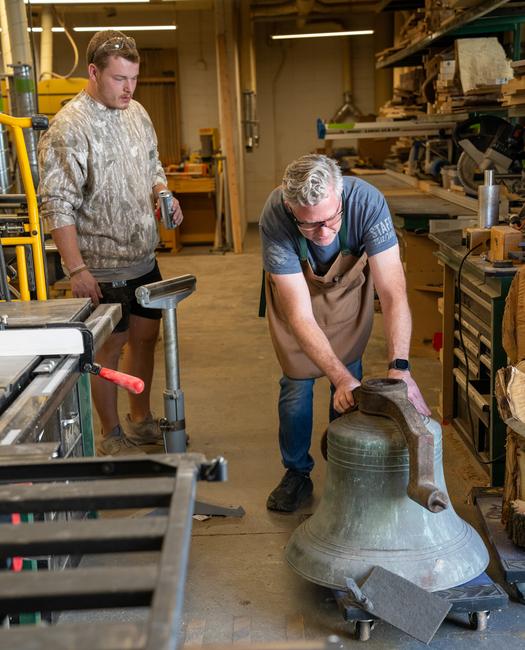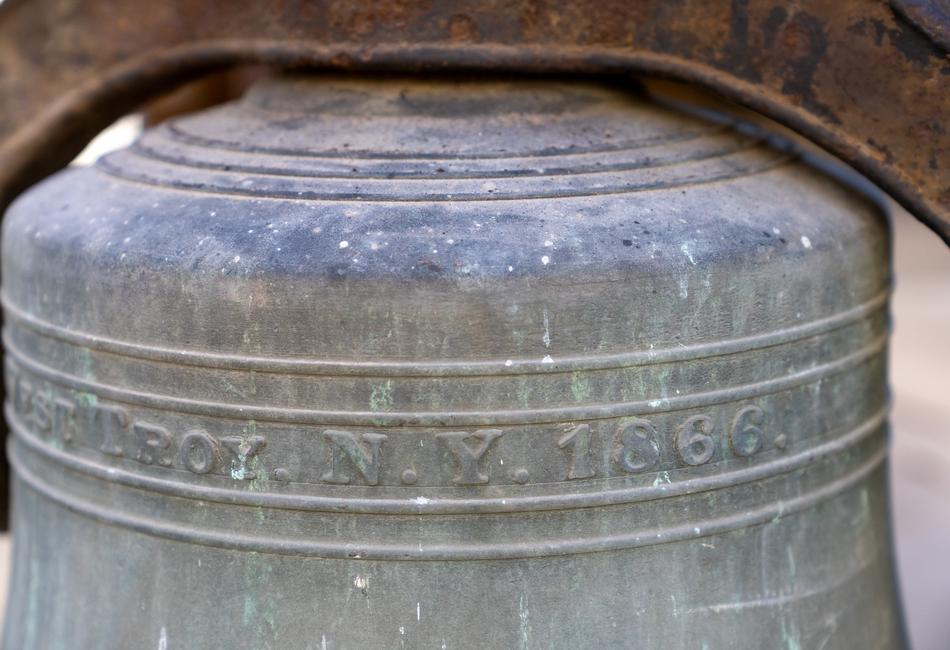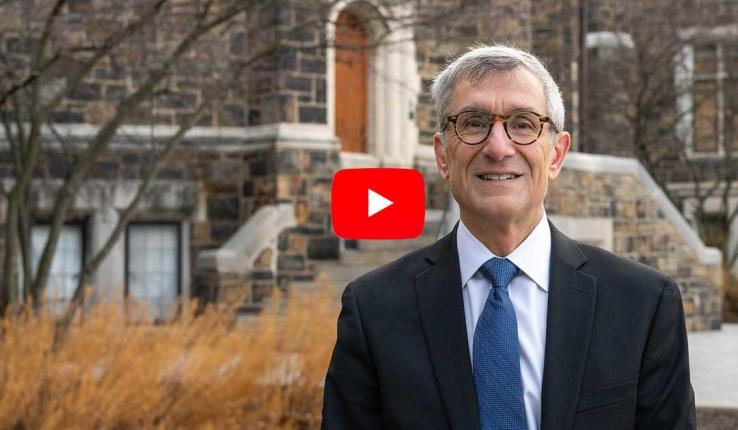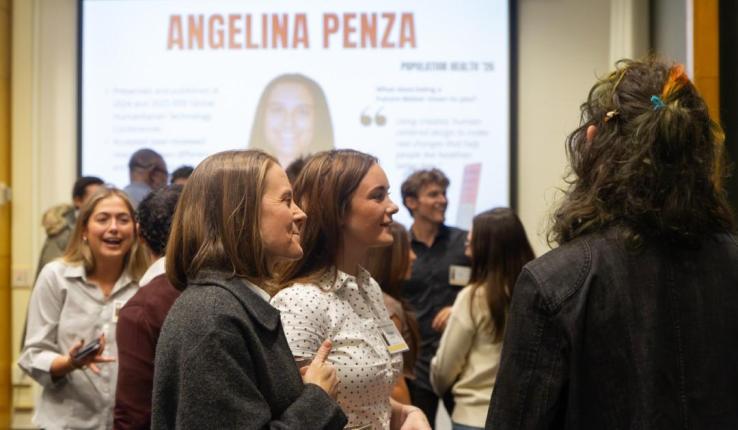Design Lab students have used reclaimed materials to create other projects across campus, including conference tables for Williams Hall in 2013, a conference table for the President’s office in 2014 and a reception desk for the Alumni Memorial Building in 2015. The labs’ most recent project was a large conference table for the Business Innovation Building in 2023.
Those projects all used wood reclaimed from trees that fell on campus during Hurricane Sandy in October 2012.
The pub tables are the first time students incorporated a historic piece of campus into a design.
“This project will transcend time,” Slocum said. “The materials we are using already transcend time. Everything we are working on has a history.”
Slocum believes the pine wood could be up to 500 years old since the trees used to make the beams were old-growth timber and would have been felled before the Clayton University Center was constructed in 1868.
The wood contains traces of the Clayton UC’s history. One of the beams is a purlin beam, a large structural beam used in roof construction. The beam is 10 inches in diameter and has charring on it, though the source of the charring hasn’t been confirmed. The beams were also riddled with hand-cut nails, which Slocum estimates students spent at least four hours removing.
“The students felt ownership, nostalgia and reverence for this material because it was part of the building,” Slocum said.
The Tables
Students who worked on the tables include: Sonja Hackenmueller ’26, Nate Ivill-Weiner ’25 and Annie Oatman ’25, who were recruited from a product design class taught by Professor of Art Architecture and Design, Wes Heiss.
Grant Litchfield ’25, who has a background in woodworking and worked in the Design Labs since his freshman year, also took part.
The first table is 6-and-a-half feet long, 5 feet wide and can seat 10. It is being used in a private dining space inside The Lehigh Pub. The second is a banquette table in the public dining room that is 10 feet long, 6 feet wide and seats eight.
The students came up with designs that were a nod to the building’s architectural style, which is considered one of the first examples of Ruskinian architecture in the United States. The Clayton UC is known for its elaborate decorative schemes, which include millwork and custom stained-glass windows, and interior wood paneling and stone walls.
The students were told the general dimensions of the tables and the type of material they’d be working with, Hackenmueller said. They used 3D modeling software to design the tables.


